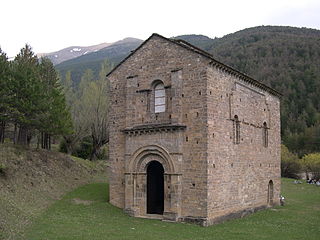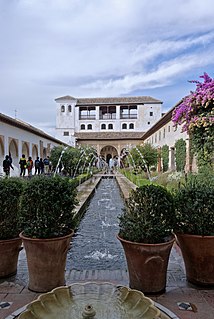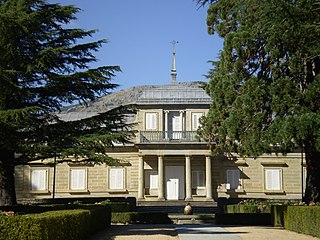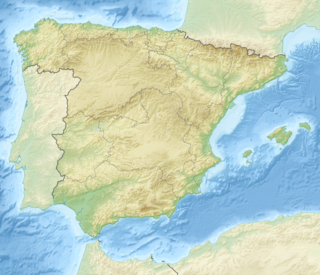A jardín histórico is a Spanish historic garden. In Spain Jardín histórico is a heritage listing which protects historic gardens. (The English equivalent would be the English Heritage 'Register of Historic Parks and Gardens of special historic interest in England'). The Spanish listing was established in 1983, replacing a former heritage category Jardín artístico. It is currently regulated by the Ministry of Education, Culture and Sport.

English Heritage is a charity that manages over 400 historic monuments, buildings and places. These include prehistoric sites, medieval castles, Roman forts and country houses. The charity states that it uses these properties to ‘bring the story of England to life for over 10 million people each year’.

Some of Spain's national heritage sites are protected under more than one classification. For example, the Alhambra and Generalife are designated for buildings and gardens.

The Alhambra is a palace and fortress complex located in Granada, Andalusia, Spain. It was originally constructed as a small fortress in AD 889 on the remains of Roman fortifications, and then largely ignored until its ruins were renovated and rebuilt in the mid-13th century by the Nasrid emir Mohammed ben Al-Ahmar of the Emirate of Granada, who built its current palace and walls. It was converted into a royal palace in 1333 by Yusuf I, Sultan of Granada. After the conclusion of the Christian Reconquista in 1492, the site became the Royal Court of Ferdinand and Isabella, and the palaces were partially altered in the Renaissance style. In 1526 Charles I & V commissioned a new Renaissance palace better befitting the Holy Roman Emperor in the revolutionary Mannerist style influenced by humanist philosophy in direct juxtaposition with the Nasrid Andalusian architecture, but it was ultimately never completed due to Morisco rebellions in Granada.

The Palacio de Generalife was the summer palace and country estate of the Nasrid rulers of the Emirate of Granada in Al-Andalus, now beside the city of Granada in the autonomous community of Andalusia, Spain.
Individual trees may be protected by Árbol singular status (the Spanish equivalent of a Tree preservation order). For example, a taxodium mucronatum which is one of the oldest trees in the Buen Retiro Park is catalogued as an arbol singular and can be viewed with other remarkable trees on a trail. [1]
A tree preservation order (TPO) is a part of town and country planning in the United Kingdom. A TPO is made by a local planning authority to protect specific trees or a particular area, group or woodland from deliberate damage and destruction. TPOs can prevent the felling, lopping, topping, uprooting or otherwise willful damaging of trees without the permission of the local planning authority, although different TPOs have different degrees of protection.

Taxodium mucronatum, also known as Montezuma bald cypress, Montezuma cypress, sabino, or ahuehuete is a species of Taxodium that is native to Mexico, and Guatemala. Ahuehuete is derived from the Nahuatl name for the tree, āhuēhuētl, which means "upright drum in water" or "old man of the water."















